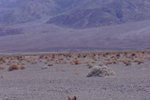Grasslands feature a unique and diverse climate, which provides a home for some of the most strange and distinct animals. Grasslands have a special climate because they contain a lot of grass, very few trees, periods of rainfall and typically dry climates, which is why the animals that inhabit the grassy areas have special visual and internal adaptations to deal with the ecosystem.
Large Grassland Animals
Grassland ecosystems have a variety of large and diverse animals. Giraffes, African elephants, bison, black rhinoceros, black-footed ferrets, brown hyenas, lions and ostriches are all examples of the types of larger animals that inhabit grasslands. In general, these animals are grazing animals, which means that they require a large amount of space and territory in order to hunt, breed and eat. These animals can be found in grasslands anywhere from the United States to Western Africa.
Grassland Birds
Numerous large birds inhabit the grassland, where they can fly for hours at a time and hunt for prey. The Red-tailed hawk, American kestrel, short-eared owl, barn owl, Savannah sparrow and Henslow's sparrow are examples of birds of prey. In general, these birds have the capability to fly for long hours at a time in order to search for prey in the grassy areas. These birds typically eat smaller grassland animals, such as prairie dogs, rats, mice, ferrets, badgers, snakes and other rodents.
Grassland Predators
In addition to birds, which are aerial grassland predators, there are numerous ground predators that seek out smaller game. Wolves, coyotes, swift foxes, leopards, hyenas, badgers and snakes represent the abundance of predators that seek out squirrels, mice, moles, rats, gophers, worms, termites and beetles for food. These animals typically have camouflage and the capability to blend in to the grassy environment in order to sneak up on their prey.
Small Animals
In addition to the huge animals in the air and on the ground, a variety of smaller animals inhabit the tiny crevices of tress, dirt and grass of the grasslands. For example, the eastern fox nake, Butler's garter snake, Chinese mantid, European mantid, red-legged locust, American bird grasshopper, monarch butterfly, eastern black swallowtail, swamp milkweed leaf beetle, red-spotted crab or goldenrod spider, and different types of worms inhabit the grassland terrain. These insects represent the lower level of the food chain and ecosystem.
References
Photo Credits
-
Thomas Northcut/Lifesize/Getty Images





